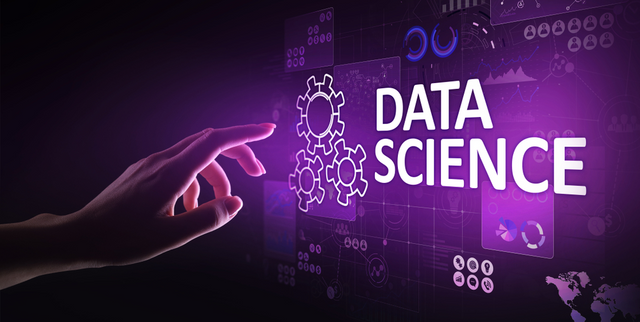What Is Data Science and Application Field Of Data Science?
Data science, which emerged as a method in business and academia and now has a presence in a wide range of areas ranging from marketing strategies to scientific research conducted within a university or institute, eventually began to show up in daily interactions. Let's try to understand the area in this post by providing a brief and technical introduction to the words and logic of data science!
Data science, also referred to as "data science," is a multidisciplinary field that employs mathematics, statistics, and computer science to extract information, analyse data, and make predictions from structured and unstructured data 
The components of structured data are clearly defined and presented if there is a relationship between them. During the Covid-19 pandemic, data like as the number of cases and vaccine doses were communicated across countries' health ministries. Because the data is well-structured, understanding and analysing data such as how many patients each country has and how many doses of vaccine it has given does not require much effort.
Anything that is unorganised and contains information falls into the unstructured data category. This article, voice recordings on WhatsApp, your photos in a computer environment, and your e-mails are all instances of things whose information is not easily recognised and necessitates a more tedious study to draw conclusions.
Because data science is still in its early stages, the definitions of its sub-fields and application forms are still being worked out. Data science uses mathematical, statistical, and computer science tools to analyse data in order to come up with predictions, trends, or repeatable patterns. In this respect, statistical-based languages like R or MatLab, as well as object-based languages like Python, are commonly em
 Because data analysis and data science have similar goals and use the same computer languages, they are sometimes misunderstood. Data science is now distinguished from data analysis, which has a macro focus. Data science encompasses not only the process of analysing data, but also the methods of data analysis and the management of databases and data warehouses. In a nutshell, data analysis is a multidisciplinary branch of science that encompasses data analysis in terms of both issues and inclusivity, whereas data analysis looks out a pattern or trend in data to provide a solution to a specific problem.
Because data analysis and data science have similar goals and use the same computer languages, they are sometimes misunderstood. Data science is now distinguished from data analysis, which has a macro focus. Data science encompasses not only the process of analysing data, but also the methods of data analysis and the management of databases and data warehouses. In a nutshell, data analysis is a multidisciplinary branch of science that encompasses data analysis in terms of both issues and inclusivity, whereas data analysis looks out a pattern or trend in data to provide a solution to a specific problem.
 )Because data science is still evolving and developing, and its applications in other business areas are growing, the bounds of its use have yet to be defined. To offer an example, its ubiquitous use in corporate life may be seen in the sphere of marketing and advertising. In order to predict customer trends, placing appropriate adverts in front of users in apps like Instagram based on data such as Google searches is a little example of data science that we experience in our daily lives. Similarly, YouTube or Netflix recommendations are presented to you based on your previous behaviour.
)Because data science is still evolving and developing, and its applications in other business areas are growing, the bounds of its use have yet to be defined. To offer an example, its ubiquitous use in corporate life may be seen in the sphere of marketing and advertising. In order to predict customer trends, placing appropriate adverts in front of users in apps like Instagram based on data such as Google searches is a little example of data science that we experience in our daily lives. Similarly, YouTube or Netflix recommendations are presented to you based on your previous behaviour.
The public sector is another example in the business world. The acts of residents to date have indicated how and in what way public services at the micro level, such as health, cleaning, education, and even bus schedule determination, can be exposed. This improves the efficiency and effectiveness of the policy in question. This method is not widely used throughout the world, but it has spawned a new field of application as a result of the merging of data science programmes, which are becoming increasingly popular in schools around the world, with public policy or political science programmes, indicating that the number of bureaucrats who will use data science in the fut
It is used in academia to support assertions made in researches with analysis, forecasts, and findings obtained from the data available. This is a significant shift for social sciences, which have historically struggled to access and use numerical data in research. To offer an example, you can provide proof about how a country's foreign policy is shaped by often repeated words or sentences in a country leader's speech in an article you'll write in the discipline of political science or international relations for which numerical data is particularly limited. These examples can, of course, be expanded.